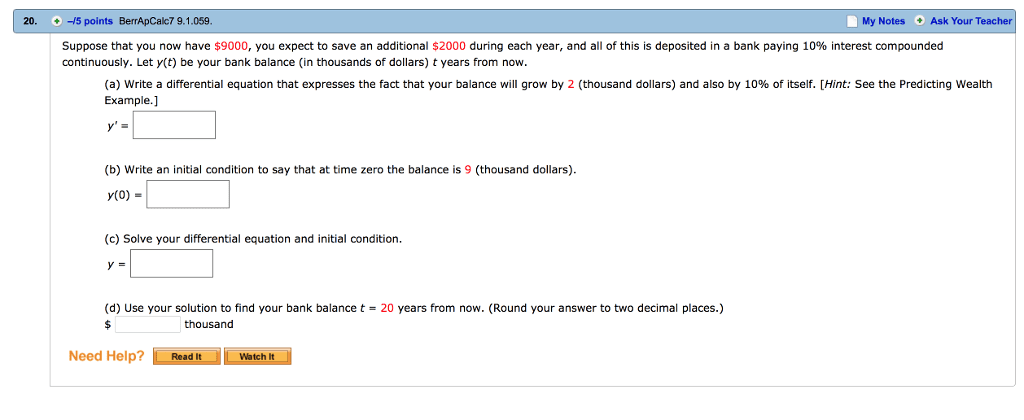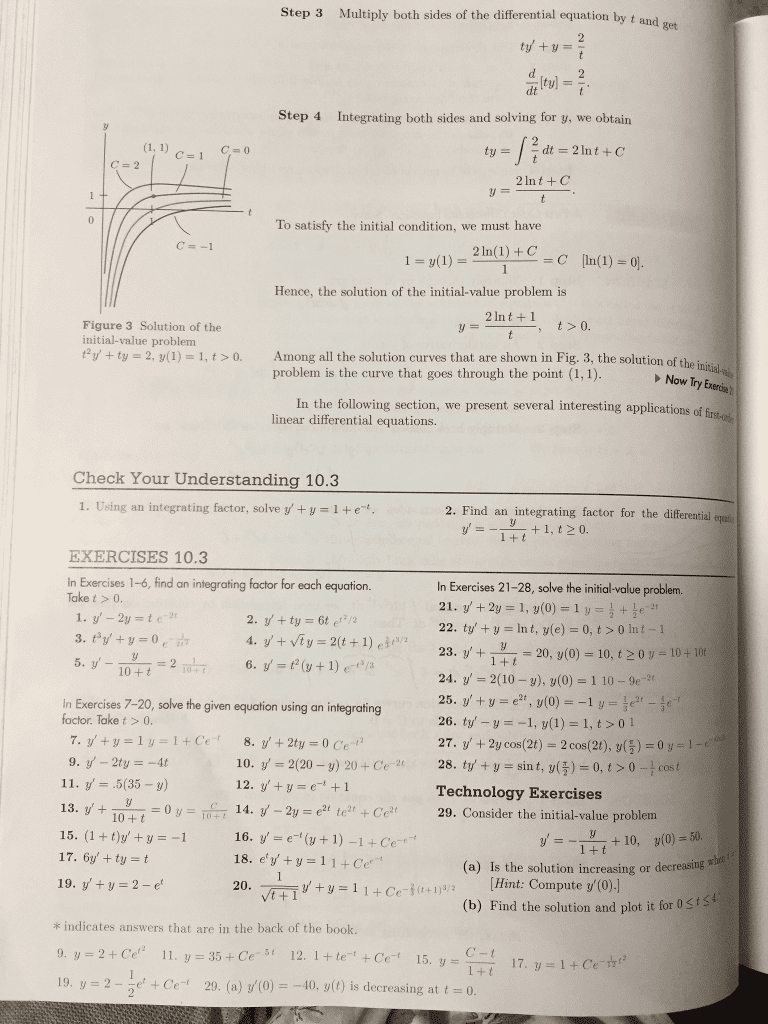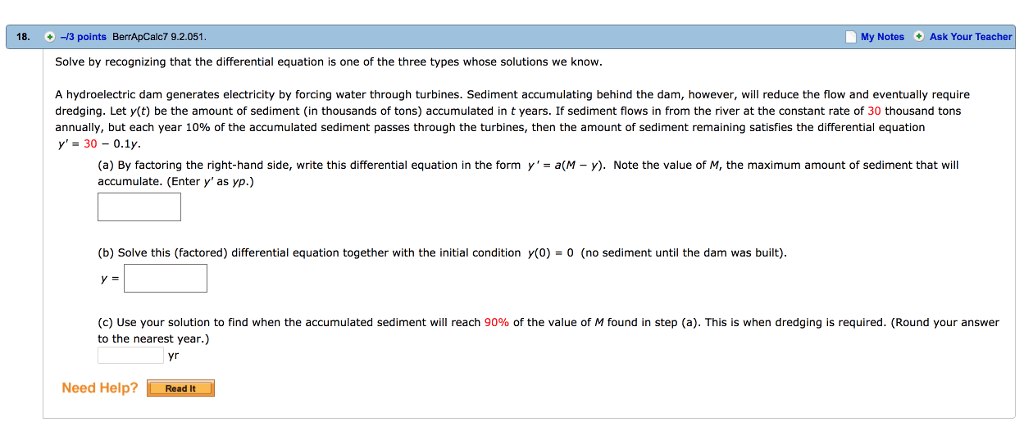MATH 1M03 Study Guide - Final Guide: Boundary Value Problem, Integrating Factor, Exponential Growth

9.1 | INTRODUCTION TO DIFFERENTIAL EQUATIONS 03/15/2017
Back to functions of one variable, y = f(x) or y = f(t)
Differential Equations (D.E. or ODE for Ordinary Differential Equations, as opposed to Partial Differential Equations) are equations
involving derivatives.
E.g. or
E.g. Rate of production of widgets is per year, with t = years. How many will be produced in the next 2 years? now.
Let be the number of widgets we have made from now to time t. The rate is
which is a D.E. This is a pure time D.E. where W = with an initial condition. We will do more
+C
This solution is the general solution to our D.E. It has an arbitrary parameter in it. To get the unique solution we will need
an initial condition or boundary condition to determine C.
In our case was to be the number of widgets produced since t=0. w(0)=0. We need . So -
And at time , we have - ~ 140.
When working with D.E. we always stat by classifying them. The next type are separable equations.
Separable Equations
That’s when the D.E. can be written as or more broadly, since
The point is, we can put all the x’s on one side, and the y’s on the other, using multiplication and division. What we all do is and
cross multiply.
E.g. Find the general solution to
Cross multiple to be
→ add C’s together to get
This is an implicit equation for y(x). As opposed to an explicit equation y = expression in x.
After solving for y, the general solution is .
SOLVING DIFFERENT EQUATIONS 03/17/2017
The “order” of a D.E. is the order of the highest derivative. In is a 3rd order D.E. In this course, we’ll stick with 1st order. From last
time, to solve a 1st order separable equation you re-arrange as → as which produces an implicit relationship between x and y.
E.g. An object has displacement (location) x(t). Its velocity is given by . If x=1, when t=0, find x(t).
→ →
After isolating for , you get where ( is some arbitrary real number C. The general solution is therefore . The particular
solution for out initial value problem is the one which . Therefore, the particular solution is .
E.g. Find P(t) if it grows at a rate proportional to itself.
, where means “proportional to” such that or so that it grows at a constant %. This is still separable. It’s like with one
being a constant as assuming P
After taking the exponent of both sides where is the arbitrary constant instead of C since =
find more resources at oneclass.com
find more resources at oneclass.com
Document Summary
Back to functions of one variable, y = f(x) or y = f(t) Differential equations (d. e. or ode for ordinary differential equations, as opposed to partial differential equations) are equations involving derivatives. Rate of production of widgets is per year, with t = years. How many will be produced in the next 2 years? now. Let be the number of widgets we have made from now to time t. the rate is which is a d. e. This is a pure time d. e. where w = with an initial condition. This solution is the general solution to our d. e. To get the unique solution we will need an initial condition or boundary condition to determine c. In our case was to be the number of widgets produced since t=0. w(0)=0. And at time , we have - ~ 140. When working with d. e. we always stat by classifying them. That"s when the d. e. can be written as or more broadly, since.



